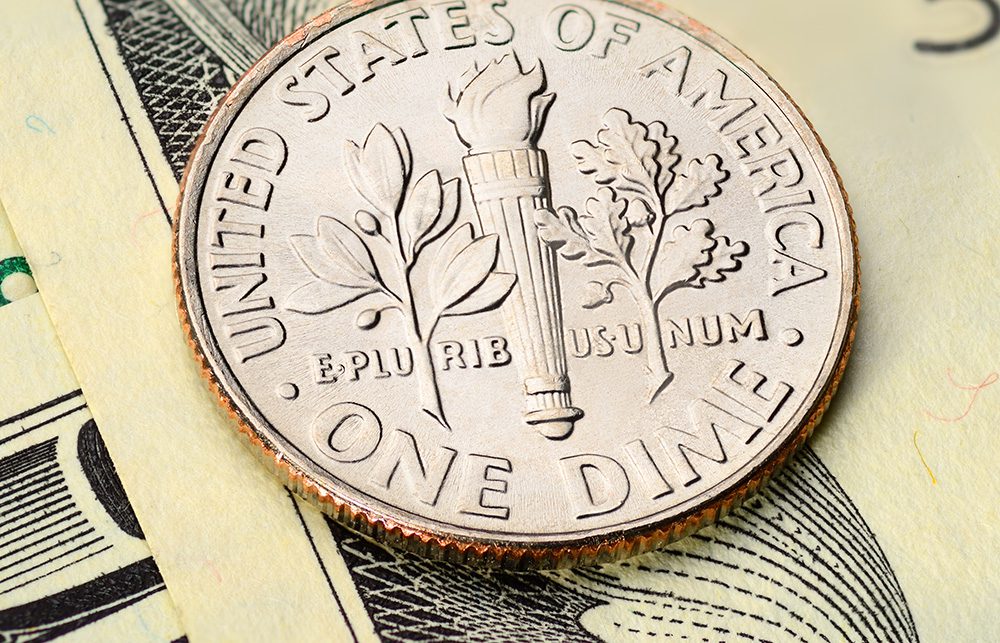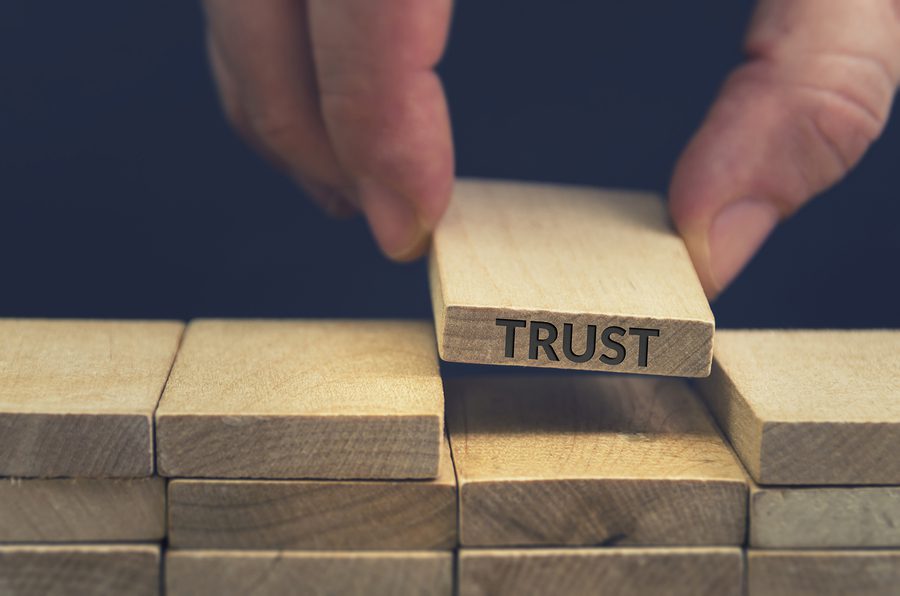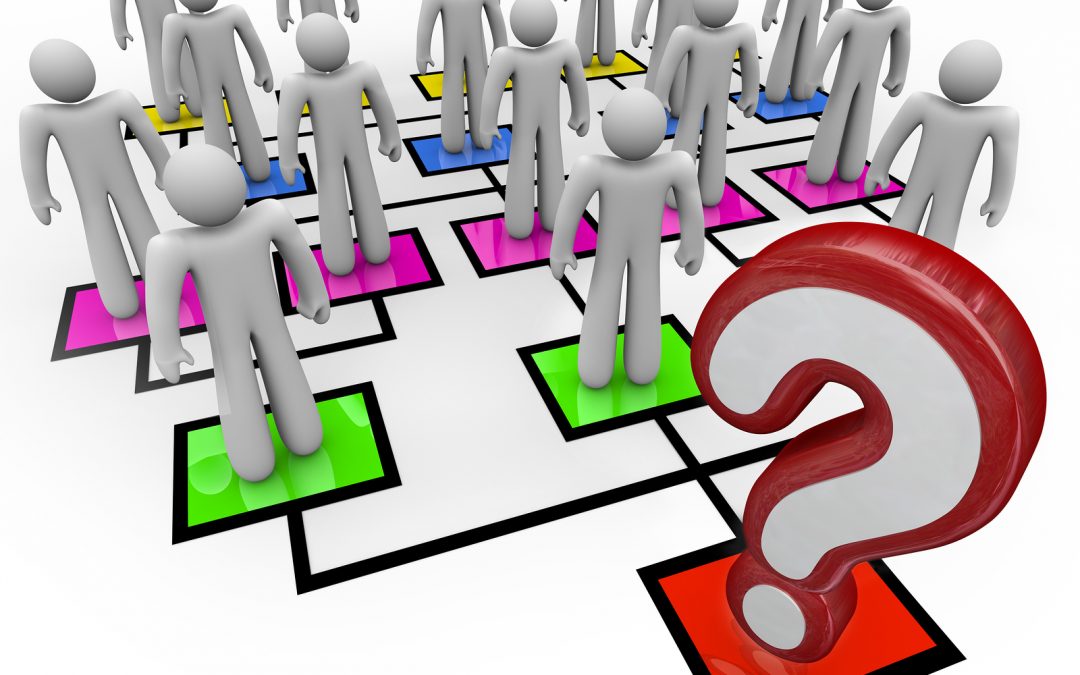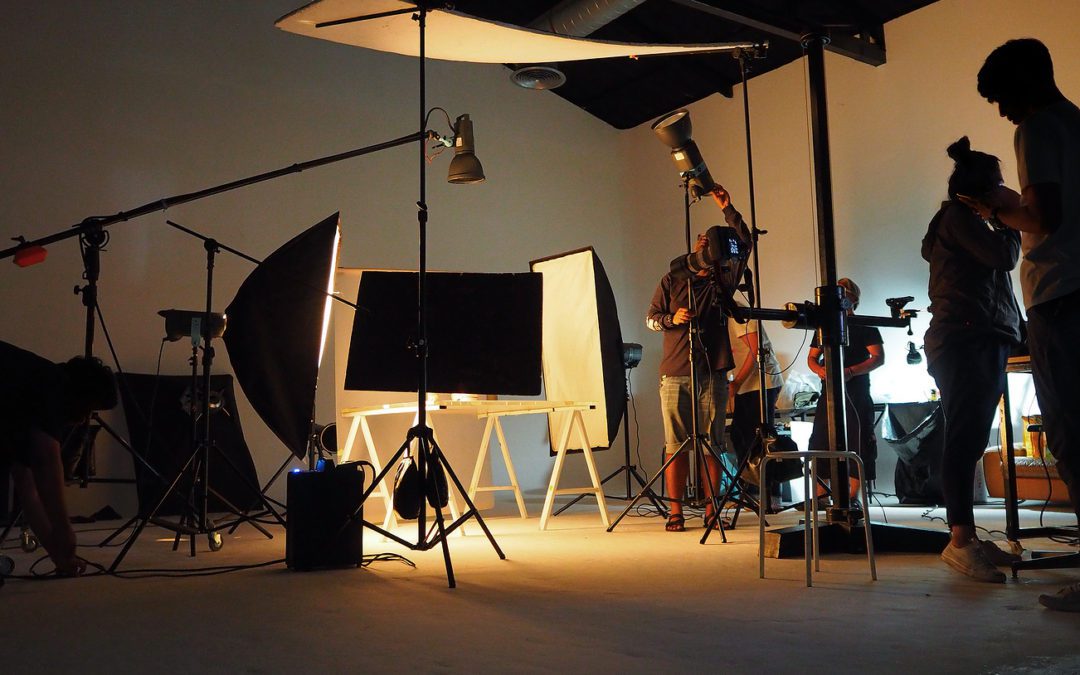
Jul 6, 2019 | Customer Experience, Sales & Retail
In a program I was conducting yesterday here in Sydney,
Australia, I heard about a customer who had purchased a $90,000 automobile,
only to find the battery in his key fob wasn’t working after only ninety days.
“No big deal,” the customer reportedly thought, “I’ll just
get the dealer to replace it.” And, of course, they did.
However, what the customer didn’t expect was a bill for $15.
The problem for the customer wasn’t really an issue about
whether a battery was covered under his warranty. It was something
infinitely more important: how his patronage was valued by the dealership.
After dropping $90K on a car and being a good customer, the unwillingness of
the dealership to take care of a small battery left him with a terrible taste
about his relationship with their organization.
The dealer got their fifteen bucks. And, they lost a
customer that was probably going to spend tens of thousands of dollars with
them over the next few years.
They were stepping over dollars to get to dimes.
In a recent episode of my podcast, PROJECT DISTINCT, I
related the story of an executive who had spent thirty nights in a hotel here
in Sydney. When he awoke to his room temperature in the upper 70s, he called
the front desk to be told the air conditioning had been turned off “for the
season.” The hotel not only refused to make things right for him, they told him
he was “lucky” they didn’t assess a charge for early checkout.
This great customer won’t return to the hotel.
They were stepping over dollars to get to dimes.
The problem for many of us is that we will read these
examples and believe – while unfortunate to those who have had to endure the
indignity – that kind of mistake won’t occur on our watch. Yet, it often does.
Team members who believe the enforcement of policy is more
important than a thrilled customer is the cornerstone of this challenge.
Leaders must be committed to establishing a culture where everyone’s job is
less about following procedure than pleasing our patrons.
- I don’t believe that anyone at the car dealership
or the Sydney hotel went to work that morning with the intention of destroying
the lifetime value of a good customer.
- But, somewhere along the way, no leader ensured
that every team member knew that they were never supposed to step over dollars
to pick up dimes.
By the way, does YOUR team know that? Are you CERTAIN?

Jun 16, 2019 | Customer Experience
If I would do a survey of the readers of this blog to ask
the question, “Do you care about your customers?” — my wager would be about
100% would enthusiastically answer in the affirmative.
Perhaps a significant reason for such an overwhelmingly
positive answer is simple: if you didn’t care about creating a distinctive
level of engagement with your customers, you probably wouldn’t make the effort
to be reading posts like this in the first place.
However, there’s a subtle – yet critical – shift in thinking
that we all must make to address an extraordinarily significant problem. It’s not whether or not we think we care
about our customers – it’s whether or not our customers believe that we care
about them and their business.
Think of your customer relationships as something like
plants; it doesn’t matter how much sunshine and rain YOU have…if your plants fail
to receive the nourishment they need to grow, they will wither and die.
And, if you’ve hired a gardener to take care of your plants/customers
– she or he had better be spreading some sunshine and sprinkles along the way,
or the result will sadly be the same.
Your employees are the gardeners that you’ve entrusted to
care and grow those plants.
You can care about customers – but, if your employees fail
to smile, if they act as if the customer is interrupting them, if they do not
look the customer in the eye, if they give off the vibe that their work is
beneath them, or make the customer feel they aren’t appreciated…your customer
relationship is soon dead on the vine.
And, by the way – isn’t it interesting that many companies
spend vast sums to teach their gardeners about biology…the facts and features
of the product…and not as much on the actual care and feeding of the plants
themselves?
In other words, we teach our people about the product and
the processes – and not about how to deliver a highly personalized service
experience.
When we examine why a customer might choose to do business
elsewhere, consider the result of a study by Pepper/Rogers Group: 60% of all customers stop
dealing with a company because of what they perceive as indifference on the
part of salespeople.
YOU
know you care about your customers. The important questions are:
- Do
your front-line people show them the same level of concern as you have?
- And,
do your customers know how much you care for them?
- Are you SURE?
Maybe…just maybe…this week is a
great time to tell them once again.

Jun 9, 2019 | Customer Experience
An executive with Carreker Corporation, Robert Hall,
wrote something in 2002 that has stuck we me all these years:
“Every time a major company creates distrust through its actions with customers, it erodes the level of trust that customers have with all of their providers.”
In other words, he’s suggesting that just as the scars
of a difficult previous relationship may taint your ability to create new
romantic involvements, when one company damages a relationship with a client,
that same customer will then bring baggage into his or her relationship with
you.
“When customers
perceive they live in a world where the motives of providers cannot be
trusted,” Hall continued, “they ardently seek trustful relationships.”
“It’s more than a desire to avoid getting
‘taken’—more than a wish to avoid dealing with sleazy people. In a world where
time has become such a premium, distrust is just so inefficient.”
That’s a great line: distrust is just so inefficient.If for no other reason than to enhance the efficiency of your organization,
now is the time to develop and execute the strategies that provide your
customers with what they really want.
So, what’s our problem? I’ll suggest that part of it is
that we seek efficiencies in other areas to such a ridiculous degree, we
alienate the very customers we desire.
Supposedly smart companies will develop efficient,
cost-effective strategies to improve their customer satisfaction survey scores
by a mere 0.3 percent. And, when they achieve that very modest goal, they then
presume their customers are “satisfied.”
(As I revealed on a recent episode of my podcast, PROJECT DISTINCT, most of the customers that are no longer doing business with you have told you they were “satisfied” or “very satisfied” on surveys. It means that “satisfaction” is a pitiful standard that does not ensure customer retention!)
But, think about it: neither Tiger Woods, Brooks
Koepka, nor Phil Mickelson begins a golf tournament merely hoping to make the
cut. They all focus on the ultimate position—first place.
The companies cited most frequently as amazing examples
of customer experiences did not begin by targeting tiny, incremental
improvements. Their goal was not to triumph by a trivial margin. They wanted to
WIN…and win big.
Creating an “Ultimate Customer Experience ®” is not
immediately an exercise in efficiency. It’s big, it’s bold, and it’s oftentimes
messy.
Ask those “corporate clichés” – like Disney, Starbucks,
Apple, Southwest, etc. – if it’s worth it. Or, you can just look at their
balance sheets over the past decade.
No matter the size or scope of your business – even if you’re a professional working on your own or an employee of a large company – go BIG.
Build trust.
Deliver winning experiences for your customer.

Apr 28, 2019 | Business Distinction, Customer Experience
This past month, I have had the privilege of addressing some pretty diverse groups. From the leading social media marketers on the planet…to those top-level customer experience professionals in Australia.
The end result is that I am glad, mad, and excited.
Here’s where I’m glad: I was dramatically reminded that there are sincere and dynamic professionals in marketing and who are totally committed to deliver “Ultimate Customer Experiences ®” to those who seek to do business with their organizations.
These aren’t smarmy marketers who are trying to be so slick that they rope you into buying something you neither need nor want. They are high-integrity professionals who seek to inform and execute on strategies that will interest and engage you and earn your ongoing commitment.
The world needs more people like the ones I met at Social Media Marketing World and CustomerExperience 360.
Here’s where I’m mad: Here are two challenges I heard repeatedly:
- Our senior leadership isn’t involved or committed to enhancing the customer experience
- Our senior leadership doesn’t coordinate the efforts we are making in marketing with the progress we are making in the customer experience
What they aren’t saying (to me, anyway) is this: our leadership team doesn’t “get it.”
Every C-suite executive should be obsessed with the experience customers receive when doing business with you. It should be “job one.” If it’s not, it’s a poor reflection upon the executive’s understanding of what generates profitability for the business — and lack of insight about the future of business, as well.
I spent some time recently with my friend — and favorite CEO — Michael Bartsch of VW Group Australia. Even as car dealers in his country are struggling with economic challenges coming from aspects outside their control, Aussie VW dealers are doing better (on average) than competing dealers. Why? In part, it’s because of Bartsch’s — and his Chief Marketing and Customer Experience Officer Jason Bradshaw’s — relentless pursuit of enhancing the experience that VW customers receive.
Their efforts have traction because they come from the top. Yet, I often see pompous so-called “leaders” who are obsessed with driving down costs or some other activity at the expense of what customers experience. That is the same path that the leaders at Sears, Circuit City, and a host of other organizations followed, as well.
A student can graduate from some medical schools and become a doctor without taking a single course on seriously studying “bedside manner” and patient communication. In the same vein, you can obtain an MBA — even a Ph.D in business — from many august institutions without thoroughly studying the impact of the customer experience on profitability.
That drives me crazy.
No honorable professional should be pursuing the goal of enhancing the customer experience and marketing integrity without the total and complete support and leadership from the C-suite.
Here’s where I’m glad: There are more tools than ever to market with integrity and to deliver an “Ultimate Customer Experience.®”
I wish I could live to be 150! I’m so excited to see how organizations will communicate and connect with customers in the future, it gives me goose bumps. Does that mean I’m excited about everything going on in the world today? Of course not.
However, change is going to happen whether I am opposed or supportive. There’s no stopping it. So, what I’ve realized is this: if it’s going to happen whether I like it or not, my world becomes so much easier if I decide to be excited about it.
We see too many people clinging to a past that no longer exists. In fact, perhaps that’s a decent definition of irrelevancy.
YOU have to make a choice: will you embrace the future, or adhere to an irrelevant past?
I don’t know about you, but I choose to embrace the future! It does not mean I have to love everything that it generates. However, I am going to get on this roller coaster and savor the ride!
No matter where you are on your pathway — personal or professional — I invite you to do the same. Be glad, mad, and excited. Be passionate about the opportunities and tools that are all around us to become better than we have ever been!

Apr 21, 2019 | Customer Experience, ICONIC, Leadership
In almost every book I’ve ever written — and there have been quite a few at this point — I quote the best business advice I have ever heard. It’s from my friend, Dr. Michael LeBoeuf, from his work that was originally titled, “The Greatest Management Principle in the World.” Here it is:
“Behavior rewarded is behavior repeated.”
The problem — and wisdom — in this phrase is that it’s so much more profound than it originally appears. Of course, it means that our customers and employees will repeat the activities that we compensate them for executing.
However, more subtle is that it also challenges us to question: What actions are we rewarding?
For example — we want sales professionals to establish relationships with customers rather than pressuring them into a solitary closing. Yet, when we examine their compensation structure, we find there’s no additional incentives for future purchases.
In other words, we give lip service to how important that on-going loyalty from our customers. However, when we examine what we reward, it appears our focus is on closing (through any means available and ethical) a single transaction.
My friend, former Chief Customer Officer at Microsoft and Lands End, Jeanne Bliss, often mentions in her presentations the story of the hospital that posted every physician’s evaluation from patients and their families. The result was that malpractice suits dropped by 43%. When receiving high marks from patients and families was rewarded, doctors responded — to the benefit of hospital, physician, and (most importantly) customers that are called “patients.”
That’s the challenge that I make to you. Take a bit to re-evaluate what you’re rewarding and examine if it’s congruent with your goals and aspirations for the future. My guess is that you’ll find some disconnection.
If you resolve it, you’ll be rewarding the behavior and activity that your desire. It’s an important step to creating distinction!

Jan 26, 2019 | Customer Experience
How can we reward our customers for doing business with us — which will increase the likelihood that they will come back and do more business in the future?
You redirect their attention to an enhanced experience.
Think like a Hollywood director and re-shoot, re-cast, or re-edit your brand. These three steps could involve everything from your image, packaging, employees, and even your customers.
Here’s how:
Re-shoot
Maybe there’s nothing wrong with your product; perhaps all you need to do is revamp your image to attract a new audience. And sometimes, all that calls for is a reshoot of your products.
Motorola figured that out when they realized they should go beyond marketing themselves as nothing more than an electronic device but as a symbol for fashion and lifestyle. Now, to compete with the iPhone, Motorola is trying to convince you they aren’t just selling you a smartphone — instead, they are delivering an accessory that helps complete your overall look with everything from phone design to an add-on projector, and more.
Re-cast
Find approaches to “re-cast” your employees or customers in a manner that creates an enhanced customer experience. Look at your target customer and see how your business needs to change based on how your customer has changed.
We’ve seen Vegas do this by recasting themselves from the gambler who hits the buffet…to the “hip” person who hits the Strip, parties, shops, and makes memories that require making pacts that, “what happens in Vegas, stays in Vegas.”
Re-edit
How can you re-edit and enhance the experiences that your customers have to deliver them more “hands-on” time with your products and services?
Interactivity is one. (Yes, your customers can get “hands-on” time both virtually and physically.) Optimizing your distribution channels is another.
We all know someone who hates being the passenger. When they’re riding in the car with us, we can sense their foot pumping an imaginary brake. These people are used to being in control.
I believe many customers are experiencing a similar anxiety today. They, too, want to have their “hands on the wheel. Providing the customer with more authority and autonomy could be an important step to enhance the experience that our customer receives in this time of “show business.”
Great examples of interactivity today can be found in the video game industry, Pay-per-view movies and on-demand sporting events, Netflix, Hulu, and Amazon, and just about every television newscast that offers their viewers the opportunity to dial their “televote” line or connect via social media to register their opinion. The reason these work so brilliantly is that the interactive participant becomes an involved customer. And isn’t this a concept that we can acknowledge all started with show business?
This approach of prioritizing interactivity can also work on your own “show business.”
- The interactive customer becomes so emotionally involved and connected to the experience you provide that they become more than customers…they are loyal advocates of your brand who start promoting for you!
I know that we’ve been focusing on change a lot lately here at Distinction Nation. But one thing that has remained constant despite all the innovations and evolving business landscape: “word of mouth advertising” remains the most powerful form of marketing.
When you re-shoot, re-cast, or re-edit your product or service, you enhance the likelihood that your customers will be delivering great “word of mouth” for YOU!






